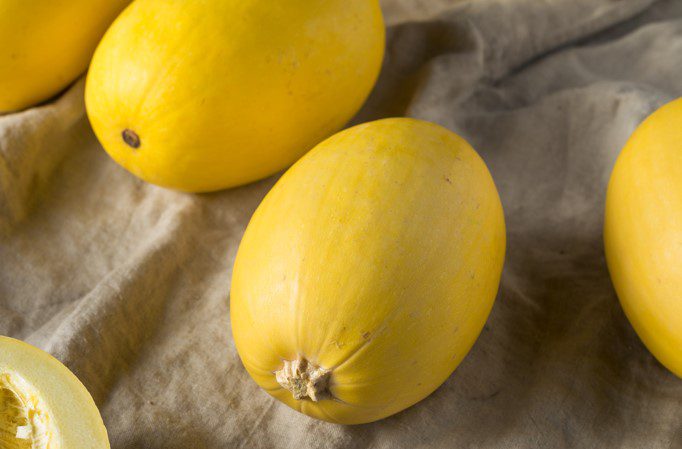Winter Melon
The winter melon is available all year, but its peak season is in the summer. The name is a mystery. Bruce Cost’s book “Asian Ingredients” explains that the name comes from mature green skin’s “waxy, white blotching.”
It looks like a “dusting of snow.” He writes that the melon can also be stored well in winter thanks to cold storage.
The winter melon is not a melon but a squash. Deh- Ta Hsiung (author of “The Chinese Kitchen”) compared the texture to honeydew melon flesh. However, he also noted that the flavor is similar to zucchini.
Although the flavor is subtle, the presentation can be spectacular. The whole winter melon can be as big as any jacko’-lantern and is often hollowed out to be used as a soup bowl at Chinese banquets.
Ambitious chefs will often carve decorative bas reliefs into the skin of the melon. Some carvings are quite complex.
Tips for buying
Winter squash is often sold by the slice. This is a great option for home cooks who don’t want to deal with the whole fruit.
In Asian markets, you will find wrapped wedges in plastic.
Avoid buying bruised fruit.
Storage tips
Cost states that frozen winter squash slices can be kept refrigerated for five to six days if wrapped in foil. Frieda’s Inc., a California specialty produce company, says that a whole melon can last up to one month in a dry and cool place.
Some cooking ideas
The classic presentation is a soup with winter melon, ham. Winter melon can be peeled and seeded. It can also be cut into pieces or cubed for stir-fries, such as substituting zucchini for zucchini.
As it cooks, the flesh becomes transparent. Winter melon can be used to make pastries or pickles.
STEAMED WINTER MELON WITH UNAGI
Winter melon soaks up flavors, making them it’s own.
In this dish especially, it is no different. The grilled unagi coupled with the udon soup-based gravy brings forth light, Oriental flavors that are both familiar and comforting.
If you are a seasoned cook, this dish takes all of 20 minutes to prepare and cook.
Gather up:
* 40g of winter melon, peeled and halved
* 30g of unagi or Japanese eel
* a dash of starch
* a pinch of Sanshoko or Japanese pepper
* 150ml of udon soup
* one egg, white only
Boil the winter squash until soft while you grill the unagi and sprinkle starch on its skin.
Then, on a steaming plate, place the grilled unagi on boiled winter melon, with the unagi skin facing down. Now, steam for 10 to 15 minutes and place on a dining plate.
While steaming, thicken the udon soup with starch and pour in egg white through a sieve on low heat.
Finally, spoon in thickened sauce onto the unagi and winter squash. Sprinkle Japanese pepper and garnish with spring onions. Now you are ready to serve.
DEEP-FRIED WINTER MELON WITH YELLOWTAIL FISH
This one makes for a lovely appetizer or snack. It is designed to be bite-sized. The fact that it is deep-fried certainly went down well with me!
Nevertheless, the polite crunchiness of the tempura batter complements the firmness of the fish and the softness of the winter squash.
All you need is:
* 40g of winter melon
Peel winter melon skin and slice into mouth bite size. Then gather up:
* 30g of yellowtail or hamachi paste
* half a handful of chopped onion
* half a handful of chopped Shitake mushroom
* 1 tsp of mayonnaise, preferably Japanese
* a pinch of salt and pepper to taste
* a dash of starch
Now, mix hamachi paste with all these ingredients. Next, sandwich fish or hamachi paste in between sliced winter melon. You can also replace the yellowtail with ikan tenggiri or ikan parang paste.
Next, you need:
* half a piece of nori or dry seaweed
Cut nori into five equal sizes and wrap your sandwiches of winter melon and fish paste into them.
Finally, deep-fry with normal batter or tempura batter.
Remove from oil after around a minute or when it is light brown. It is terrific when dipped in salty Japanese mayonnaise!



























